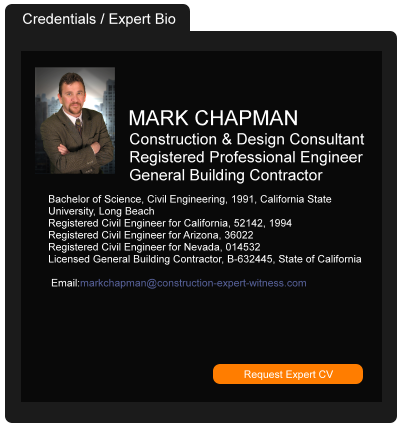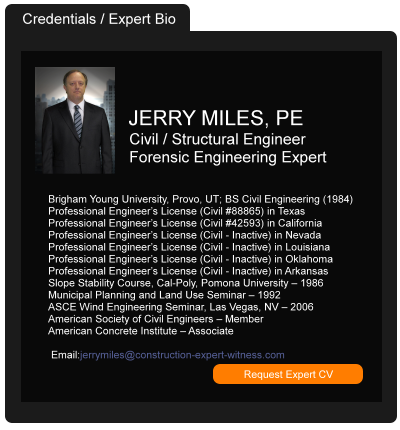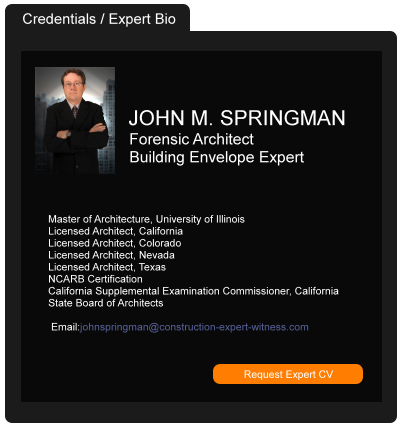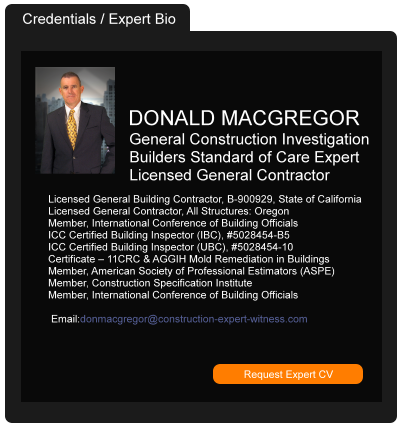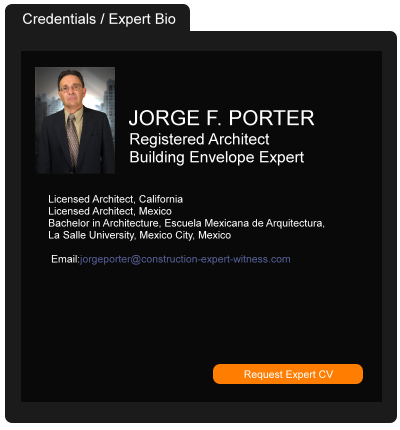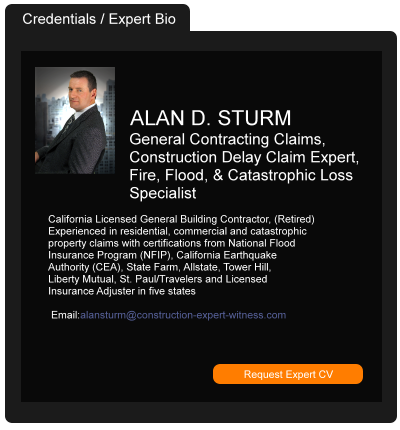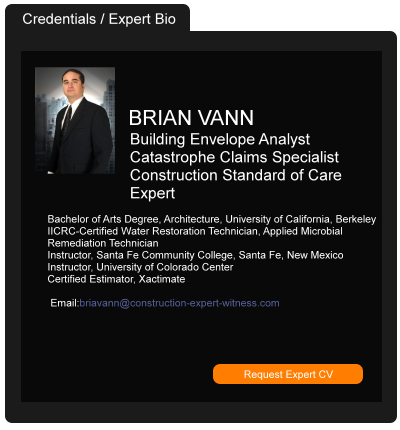Construction and Contract Issues Blamed for Problems at Anchorage Port
August 27, 2013 —
CDJ STAFFA third-party audit of the construction at the Port of Anchorage has found fault with the design provided by the engineers. In response, PND, the engineering firm involved, has claimed that it was not their design, but faulty construction of it that lead to an interruption in the construction project.
Separately, the Office of the Inspector General has called into question how MARAD, the agency which oversaw the port construction, handled the planning and contracts for the project.
Control of the project has been taken over by the Municipality of Anchorage, and they have called into question PND’s open cell sheet pile design and PND’s design of the dock infrastructure. Simpson, Gumpertz and Heger reviewed the design, comparing it to a design provided by CH2M Hill, and found that the PND design was inadequate. A contract was subsequently awarded to CH2M Hill.
Read the court decisionRead the full story...Reprinted courtesy of
Construction Law Breaking News: California Supreme Court Rules in Favor of Beacon Residential Community Association
July 09, 2014 —
Steven M. Cvitanovic – Haight Brown & Bonesteel LLPOn July 3, 2014, the California Supreme Court issued its opinion affirming the First District Court of Appeal in the case of Beacon Residential Community Association v. Skidmore, Owings & Merrill (Case No. S208173). The issue in the Beacon case is whether the architects of a residential project owe a duty to future third party homeowners under SB800 and common law. In 2011, Judge Richard Kramer of the San Francisco Superior Court sustained demurrers of Skidmore, Owings & Merrill and HKS Architects to the homeowners association complaint without leave to amend. The homeowners association appealed and the First District Court of Appeal reversed Judge Kramer, ruling that the homeowners could assert SB800 and common law claims against the architects of the project even in the absence of privity of contract.
Read the court decisionRead the full story...Reprinted courtesy of
Steven M. Cvitanovic, Haight Brown & Bonesteel LLPMr. Cvitanovic may be contacted at
scvitanovic@hbblaw.com
Defective Stairways can be considered a Patent Construction Defect in California
September 24, 2014 —
William M. Kaufman – Construction Lawyers BlogStairs are not safe! At least the Court of Appeal in the Second Appellate District of California doesn’t think so.
A rail station in Los Angeles was completed by the Los Angeles County Metropolitan Transportation Authority (“MTA”) in 1993. The rail station was part of the development of the Southern California Rapid Transit District Metro Rail Project. In 2011, the plaintiff fell on a stairway at the station. In August 2012, Plaintiff sued the MTA for dangerous condition of public property, statutory liability, and negligence. Among other defects, plaintiff alleged the banister of the stairwell was “too low” and the stairwell “too small” given the number, age, and volume of people habitually entering and exiting the rail station. In addition, plaintiff alleged that MTA “failed to provide adequate safeguards against the known dangerous condition by, among other acts and omissions, failing to properly design, construct, supervise, inspect and repair the Premises causing the same to be unsafe and defective for its intended purposes.” MTA, in turn, cross-complained against Hampton- the entity that provided design and construction services at the station.
Hampton demurred to the first amended cross-complaint, asserting a four year statute of limitations defense pursuant to California Code of Civil Procedure section 337.1, claiming the alleged deficiencies were patent defects. On September 11, 2013, the trial court overruled the demurrer finding that the defect was not patent. Hampton appealed.
The appellate court overruled the trial court’s ruling and in fact, granted Hampton’s writ of mandate and even directed the trial court to sustain the demurrer without leave to amend! (Delon Hampton & Associates v. Sup. Ct. (Los Angeles County Metropolitan Transportation Authority) (Cal. App. Second Dist., Div. 3; June 23, 2014) 227 Cal.App.4th 250, [173 Cal.Rptr.3d 407].)
The appellate court found that the purpose of section 337.1 is to “provide a final point of termination, to proctect some groups from extended liability.” A “patent deficiency” has been defined as a deficiency which is apparent by reasonable inspection. See Tomko Woll Group Architects, Inc. v. Superior Court (1996) 46 Cal.App.4th 1326, 1336. The court found a patent defect can be discovery by the kind of inspection made in the exercise of ordinary care and prudence, whereas a latent defect is hidden and would not be discovered by a reasonably careful inspection. See Preston v. Goldman (1986) 42 Cal.3d 108, 123. The test to determine whether a construction defect is patent is an objective test that asks “whether the average consumer, during the course of a reasonable inspection, would discover the defect…” See Creekbridge Townhome Owners Assn., Inc. v. C. Scott Whitten, Inc. (2009) 177 Cal.App.4th 251, 256.
Mr. Kaufman may be contacted at wkaufman@lockhartpark.com, and you may visit the firm's website at www.lockhartpark.com
Read the court decisionRead the full story...Reprinted courtesy of
William M. Kaufman, Lockhart Park LP
OSHA Joins the EEOC in Analyzing Unsafe Construction Environments
June 26, 2023 —
Cameron S. Hill Sr. - Construction ExecutiveConsistent with the Equal Employment Opportunity Commission's (EEOC) Strategic Enforcement Plan (SEP)
published in January 2023, which noted an increased focus on the construction industry as it relates to harassment and discrimination issues within the workplace and around hiring and the advancement of minorities, the Occupational Safety and Health Administration (OSHA) is following suit. At the end of March 2023, OSHA leaders announced another arrow in their quiver: OSHA has new authority through its Wage and Hour Division to issue certifications supporting applications for "U" nonimmigrant status and "T" nonimmigrant status visas.
Reasoning that workers' immigration status, social inequalities or differences in culture can cause them to fear retaliation for identifying unsafe work environments and criminal activity, such as trafficking, murder, blackmail, extortion and other serious crimes, Assistant Secretary of Labor for Occupational Safety and Health, Doug Parker
stated, "The Occupational Safety and Health Administration's top priority is to ensure workers are safe and can exercise their rights, regardless of their demographic or immigration status. A key part of that mission is expanding our work to combat workplace inequities that can create hazards and affect vulnerable workers who are likely to be exploited or victims of crimes. Our vision extends beyond setting standards, inspecting workplaces and providing training. Becoming a visa-certifying agency gives us one more tool in our wide-ranging efforts to better protect workers and their rights on the job."
Reprinted courtesy of
Cameron S. Hill Sr., Construction Executive, a publication of Associated Builders and Contractors. All rights reserved.
Mr. Hill may be contacted at chill@bakerdonelson.com
Read the court decisionRead the full story...Reprinted courtesy of
Waiver of Subrogation and Lack of Contractual Privity Bars Commercial Tenants’ Claims
May 08, 2023 —
Melissa Kenney - The Subrogation StrategistIn United States Automatic Sprinkler Corporation v. Erie Insurance Exchange, et al., No. 2SS-CT-264, 2023 Ind. LEXIS 105, the Supreme Court of Indiana (Supreme Court) reversed an order of the trial court that denied a motion for summary judgment filed by a sprinkler contractor. At issue was whether commercial tenants – one who contracted with the sprinkler contractor and others who did not – could recover for their respective property damages. The court held that under the contract’s subrogation waiver and agreement to insure, the contracting tenant waived its insurer’s rights to recover through subrogation. With respect to the non-contracting tenants, who sought to recover only property damages, the court held that the absence of contractual privity barred their recovery.
The case centered around a sprinkler system that malfunctioned and flooded the Sycamore Springs Office Complex (Landlord), causing extensive property damage to four commercial tenants. Surgery Center, one of the four tenants, requested permission from the Landlord to install a sprinkler system inside the building. Landlord agreed, in exchange for Surgery Center agreeing to be solely responsible for maintaining the sprinkler system. Surgery Center hired United States Automatic Sprinkler (Automatic Sprinkler) to both install and conduct periodic inspection and testing of the sprinkler system. The contract terms outlined the scope of work to be performed by Automatic Sprinkler and the work was limited to the inspection and testing of the sprinkler system. Although repairs and emergency services were excluded from the contract, each could be performed upon the request and authorization of Surgery Center for an additional cost. The contract also contained certain risk allocation provisions including a waiver of subrogation and an agreement to insure.
Read the court decisionRead the full story...Reprinted courtesy of
Melissa Kenney, White and Williams LLPMs. Kenney may be contacted at
kenneyme@whiteandwilliams.com
Modern Tools Are Key to Future-Proofing the Construction Industry
September 19, 2022 —
Guillaume Le Gouic - Construction ExecutiveThe U.S. construction industry is facing a tech revolution that’s upending the roles of skilled workers. Many traditional contractors are struggling to embrace the new technologies customers increasingly demand, while the industry struggles to attract young professionals. According to the latest
American Community Survey data, the median age of a construction worker is 41.
This is particularly concerning given the confluence of two trends: the construction industry is facing a critical workforce shortage that’s only
expected to intensify, and the workforce is aging—
NCCER is predicting around 40% are expected to retire by 2031. Industry leaders must prioritize using the latest industry solutions and innovations to modernize construction work, transform the construction industry and appeal to the next generation of contractors.
Throughout COVID-19, the construction sector experienced a higher number of workers quitting jobs as opposed to being laid off, indicating the older workforce likely took the opportunity to retire early, along
with more than three million other Americans who did the same. Currently, industry leaders are not doing enough to communicate opportunities to help shift the career perception of electrical contractors from simply being “blue collar” and un-exciting. A 2019 National Association of Home Builders (NAHB) found only
3% of people ages 18 to 25 were interested in pursuing a construction career, with most respondents noting the desire for a less physically demanding job.
Reprinted courtesy of
Guillaume Le Gouic, Construction Executive, a publication of Associated Builders and Contractors. All rights reserved.
Read the court decisionRead the full story...Reprinted courtesy of
Attorneys' Fee Clauses are Engraved Invitations to Sue
April 19, 2021 —
David M. McLain – Colorado Construction LitigationAs we start another trip around the sun, hopefully you are in the process of updating your form contracts, including purchase and sale agreements and express written warranties. Because the law and litigation landscape continually changes, it is a good practice to periodically update the forms you use in order to give yourself a fighting chance if and when the plaintiffs' attorneys come knocking on your door. As you engage in this process, I hope that you will take a critical look at whether your contracts include a prevailing party attorneys' fees clause and, if so, whether you should leave it in there.
In Colorado, parties are entitled to recover attorneys' fees only if provided for by statute or by contract. Historically, plaintiffs' attorneys relied on two statutes, the Colorado Consumer Protection Act and Colorado's Statutory Interest statute, to recover attorneys’ fees in construction defect cases. In 2003, the Colorado legislature capped treble damages and attorneys' fees under the Colorado Consumer Protection Act at $250,000, effectively restricting plaintiffs' attorneys from relying on the CCPA to recoup their attorneys' fees, especially in large cases. In 2008, the Colorado Supreme Court issued its decision in Goodyear v. Holmes, stating that plaintiffs can only claim prejudgment interest under Colorado's Statutory Interest statute, in cases where they have already spent money on repairs, not when they are suing for an estimate of what repairs will cost in the future. Without either the CCPA or the prejudgment interest statute to recover attorneys' fees, plaintiffs' attorneys most often now rely on the prevailing party attorney fee clause in contracts between the owner and builder, or in the declaration of covenants, conditions and restrictions in situations where a claim is prosecuted by an HOA.
Read the court decisionRead the full story...Reprinted courtesy of
David McLain, Higgins, Hopkins, McLain & RoswellMr. McLain may be contacted at
mclain@hhmrlaw.com
Rooftop Solar Leases Scaring Buyers When Homeowners Sell
June 26, 2014 —
Will Wade – BloombergDorian Bishopp blames the solar panels on his roof for costing him almost 10 percent off the value of the home he sold in March.
That’s because instead of owning them he leased the panels from SunPower Corp. (SPWR), requiring the new owner of the house to assume a contract with almost 19 years remaining. He had to shave the asking price for the house in Maricopa, Arizona, to draw in buyers unfamiliar with the financing arrangement.
Leasing is driving a boom in solar sales because most require no money upfront for systems that cost thousands of dollars. That’s made solar affordable for more people, helping spur a 38 percent jump in U.S. residential installations in the past year. Since the business model only gained currency in the past two years, the details embedded in the fine print of the deals are only starting to emerge.
Read the court decisionRead the full story...Reprinted courtesy of
Will Wade, BloombergMr. Wade may be contacted at
wwade4@bloomberg.net























































